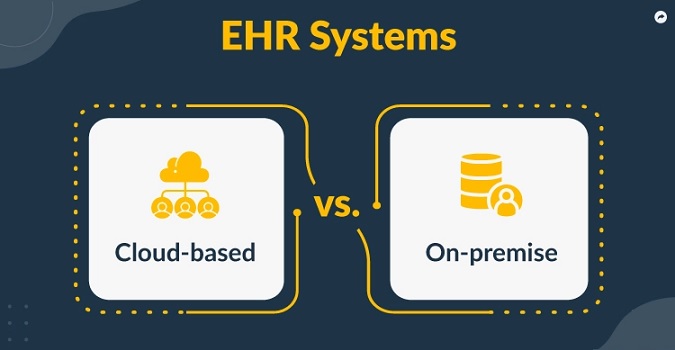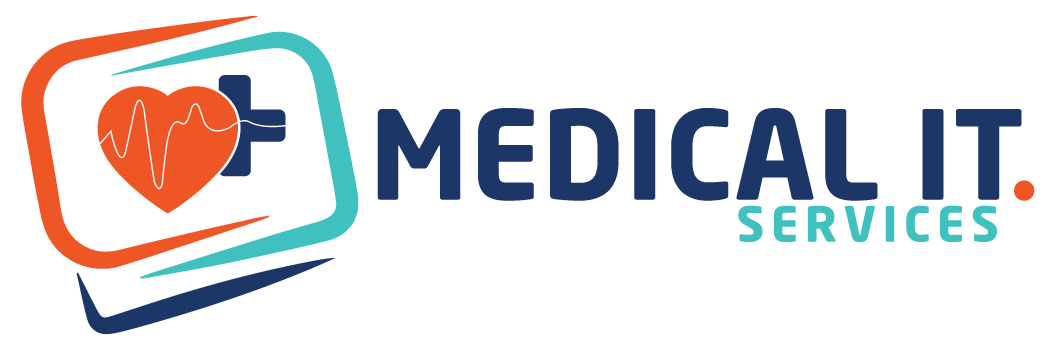In today's fast-paced environment, the Information Technology (IT) sector stands out as one of the…

Cloud-Based EHR Vs In-House EHR: An in-depth review to choose the right EHR
In today’s digital world, Electronic Health Record (EHR) systems have transformed the way healthcare providers manage patient information. There are two primary methods of deploying EHR systems including cloud-based EHR and in-house EHR. Healthcare providers can improve patient outcomes with cloud-based EHR systems because they offer a range of benefits including increased efficiency, data security, and reduced operational costs. In this detailed review, we will compare and discuss the difference between Cloud-Based EHR and In-House EHR Systems, and also help you to choose the best solutions for your practice.
What are Cloud-Based EHRs?
Cloud-based EHRs (electronic health records) are software systems that store and manage patient health information by a third-party services provider in the cloud. This means that the data is stored on remote servers and accessed through the Internet, rather than on local servers or devices. This makes it easier for healthcare providers to access patient data from anywhere at any time. The cloud-based EHR provider is responsible for maintaining the servers, providing technical support, and ensuring data security.
Advantages of Cloud-Based EHRs
Cost-Effective:
Eliminate the need for expensive hardware and software investments. This can save healthcare providers a significant amount of money.
Scalability:
Easily accommodate changes in the size of the organization. As the organization grows or shrinks, the cloud-based EHR can be scaled up or down accordingly.
Accessibility:
Quickly access from any device with an internet connection. This makes it easy for healthcare providers to access patient data from anywhere.
Data Security:
Robust security measures are in place to protect patient data. The EHR provider is responsible for implementing and maintaining these security measures, ensuring that patient data is protected from unauthorized access.
What are In-House EHRs?
In-house EHRs (electronic health records) are software systems that are installed and run on servers located within the healthcare organization. This means that the data is stored on-site, rather than in the cloud. The healthcare organization is responsible for maintaining the servers, providing technical support, and ensuring data security.
In other words, an in-house EHR is a software application that is built and customized by the healthcare organization’s IT team to meet their specific needs and workflows. This type of EHR is hosted on the organization’s own servers and data centers, allowing them to have full control over the system and its data.
Advantages of In-House EHRs
Control:
In-house EHRs offer healthcare providers greater control over the EHR software and patient data. The healthcare organization can customize the software to meet their specific needs and has complete control over the data.
Security:
In-house EHRs offer greater security than cloud-based EHRs as the healthcare organization has complete control over the data. This reduces the risk of data breaches.
Integration:
In-house EHRs can be integrated with other software systems used by the healthcare organization. This can increase efficiency and reduce the risk of errors.
Switching your healthcare practice to cloud-based EHR?
Moving to a cloud-based electronic health record can be a complex process, but by following these steps and working closely with your chosen vendor, you can ensure a successful and seamless transition. Here are some steps to consider when switching to a cloud-based electronic health records:
- Evaluate your current EHR system: Assess your current system’s strengths, weaknesses, and limitations to help identify the features and functionalities that you need in a new EHR system.
- Identify potential vendors: Research cloud-based EHR vendors to find a system that meets your practice’s specific needs and budget. Look for vendors with experience working with healthcare practices similar to yours and that offer reliable customer support.
- Develop a transition plan: Create a detailed plan for transitioning from your current EHR to the new cloud-based system. This should include a timeline, a list of tasks, and a plan for training staff on the new system.
- Go live with the new system: Once you have thoroughly tested the new EHR system, go live with it. Be prepared to troubleshoot any issues that arise and provide ongoing support to staff members as they adjust to the new system.
How to choose between cloud-based EHR Vs in house EHR?
Choosing the right EHR solution requires careful consideration of the specific needs of your healthcare organization. You need to consider factors such as budget, staff expertise, and organisational specific needs. MedicalIT.Services can do research on your behalf and choose the best EHR solution to meet the specific need of your practice.
Summary
As healthcare practices increasingly transition to electronic health records, the decision to choose between cloud-based EHRs or in-house EHRs has become more important than ever. Both cloud-based and in-house EHRs offer unique benefits and drawbacks that healthcare organizations need to weigh when making their choice. By using managed cloud solutions, healthcare providers can focus on delivering high-quality patient care, without the need to maintain their own IT infrastructure.
Also Read:




